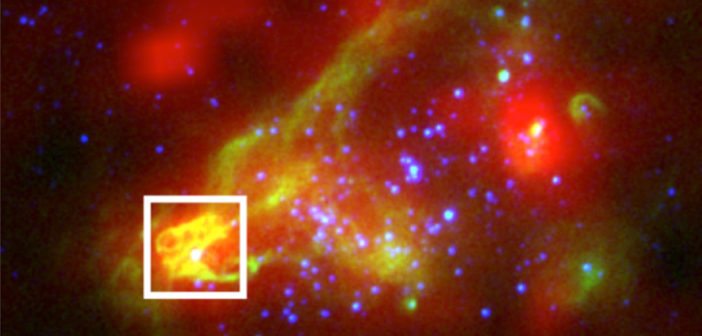This complex composite image reveals Holmberg II X-1, an example of an ultraluminous X-ray source (ULX). As the name suggests, ULXs are objects that shine anomalously bright in X-rays; they’re not as bright as active galactic nuclei, but they’re brighter than any known isotropic stellar process. What powers these unusual sources? Led by Ryan Lau (Japan Aerospace Exploration Agency and California Institute of Technology), a team of scientists is searching for more details by studying ULXs in a different wavelength: infrared. The false-color image above shows what the ULX Ho II X-1 looks like in combined Spitzer/IRAC 4.5 μm (red), HST/WFC Hα (green), HST/WFC V-band (blue) wavelengths. The source and its nebula — roughly 60 light-years across — are contained within the white box. Lau and collaborators’ search for infrared counterparts to nearly 100 ULXs show that some ULXs are redder in infrared than others, which the authors propose is a consequence of thermal emission from circumstellar or circumbinary dust. To learn more about we’ve discovered about these odd sources, check out the article below.
Citation
“Uncovering Red and Dusty Ultraluminous X-Ray Sources with Spitzer,” Ryan M. Lau et al 2019 ApJ 878 71. doi:10.3847/1538-4357/ab1b1c

